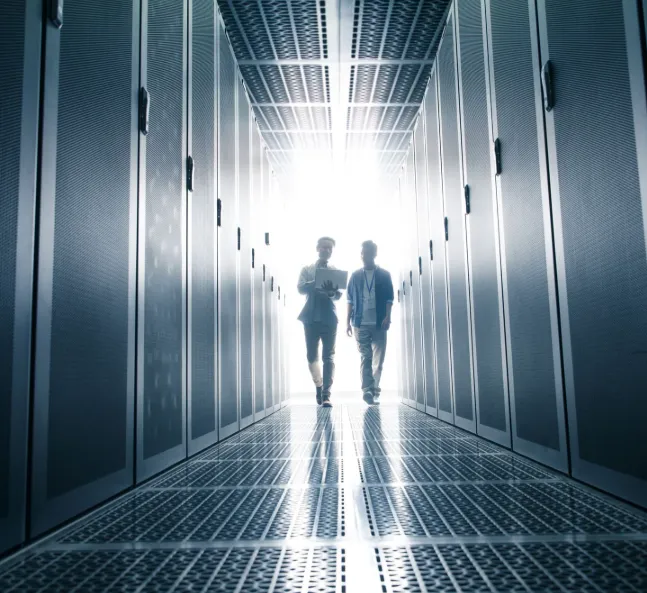In an era where artificial intelligence (AI) is transforming industries and energy prices are in constant flux, the cost of outdated data centre infrastructure has become more critical than ever. Tikiri Wanduragala, UKI ISG Technology Leader at Lenovo Infrastructure Solutions Group, explores the growing importance of understanding total cost of ownership (TCO) for data centres. As AI accelerates and businesses face unpredictable energy costs, it’s time for IT leaders to rethink their infrastructure strategies, optimize hardware refresh cycles, and unlock smarter, more sustainable operations.
Rethinking Total Cost of Ownership
For years, total cost of ownership (TCO) has been a core consideration for data centre operators. But with the rapid advancements in AI and the constant pressure of rising energy costs, TCO has become more than just a budgeting factor—it’s now a strategic priority. The financial implications of maintaining outdated infrastructure extend far beyond the initial investment in hardware and cooling systems. Ongoing operational expenses and the need for upgrades to keep pace with evolving technologies are creating hidden costs that many businesses overlook.
AI has altered the landscape, making regular hardware updates not just a luxury, but a necessity. Regularly refreshing hardware offers measurable improvements in efficiency and cost savings, while positioning businesses to adopt the latest technologies. Given today’s environment, staying competitive means addressing the full scope of TCO and taking a more proactive approach to technology refresh cycles.
Breaking Down the Barriers
A common challenge for IT leaders is the reluctance to invest in new servers. Many companies get their servers running and leave them until they break down, often due to fear of the unknown or uncertainty about the impact of change. This passive attitude usually stems from siloed thinking, where infrastructure, software, and facilities fall under separate budgets, making it difficult to calculate TCO accurately.
To tackle this, businesses must bring together all departments to better understand the true costs of maintaining outdated servers. When everyone—from infrastructure teams to management—comprehends the full costs associated with old hardware, it shifts the perspective on the value of upgrading. It’s about connecting the dots between departments and fostering a collective recognition of the need for regular upgrades to maintain competitiveness.
The Case for Regular Upgrades
Thanks to Moore’s Law, which predicts that computing power will double every two years, companies that invest in regular hardware upgrades can see significant performance gains. For example, replacing a three-year-old server with a newer one can double processing power or halve costs, making it an ideal opportunity for consolidation and cost reduction. Leading companies are already capitalizing on this by actively refreshing their IT infrastructure, understanding that short-term investment leads to long-term savings.
However, maintaining old hardware can be expensive. Extending warranties, making repairs, and dealing with energy inefficiencies add up quickly. A useful rule of thumb is that no more than 20% of a data centre’s hardware should be older than three years. This ensures that companies can take advantage of the latest innovations and avoid falling behind.
Outdated infrastructure may also limit the adoption of emerging technologies. For instance, AI applications may require powerful GPUs, but older servers may lack the capacity to support these components. Rather than relying on extended warranties, businesses should consider a consistent cycle of refreshing and recycling their hardware, perhaps through an ‘as-a-service’ model, which allows access to the latest equipment without the need for upfront capital expenditure.
Maximizing Efficiency with Fewer Resources
A key focus in modern data centres is doing more with less. By regularly refreshing inventory, companies can consolidate hardware, reducing the number of servers while maximizing performance. Virtualization technologies play a critical role in this, enabling businesses to get more out of existing hardware by running multiple virtual servers on a single physical machine. However, there’s still untapped potential for many organizations to optimize their infrastructure further.
Large enterprises often run their servers at maximum capacity, but there’s a hesitance to push hardware to its limits due to concerns about redundancy and reliability. However, with the right safety protocols in place, running servers at full capacity can significantly boost efficiency and lower costs. The goal is to reduce the number of physical machines while optimizing performance, which ultimately leads to a more cost-effective and energy-efficient operation.
Tackling Energy Costs
Energy consumption is one of the biggest expenses for data centres, particularly given the extensive use of cooling systems. Power used to cool the data centre and run servers is a significant part of the total energy consumption. Advanced cooling technologies, such as water cooling, can help mitigate these costs by reducing the reliance on traditional air conditioning systems.
A well-managed refresh cycle also helps control energy consumption. It’s crucial to have systems in place that monitor energy usage across the data centre to identify areas of inefficiency. Once you understand where energy is being used most, it’s easier to make targeted improvements, such as optimizing server utilization or upgrading inefficient equipment. The aim is to get the most out of every square foot of data centre space, just as a farmer maximizes the yield of his fields.
The Future of Data Centres: Sustainability and Efficiency
With increasing energy regulations and high costs, the need for energy-efficient data centres has never been more urgent. Leading companies in the industry are already optimizing their server utilization, streamlining infrastructure, and improving overall energy efficiency. By adopting a more holistic approach to server hardware, businesses can reduce their carbon footprint, drive significant cost savings, and boost profitability.
For forward-thinking organizations, taking control of TCO and prioritizing energy efficiency will be crucial for staying competitive in the long term. Investing in regular hardware refreshes, optimizing infrastructure, and adopting new technologies will not only improve performance but also contribute to a greener, more sustainable future for the data centre industry.







